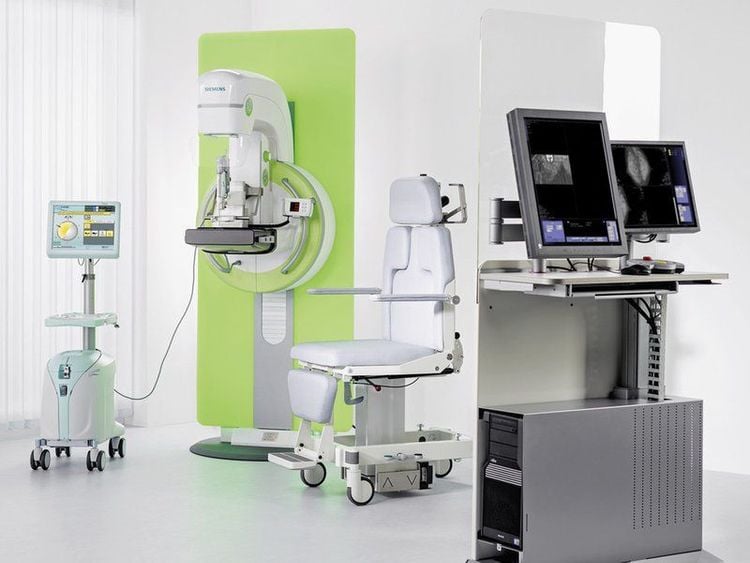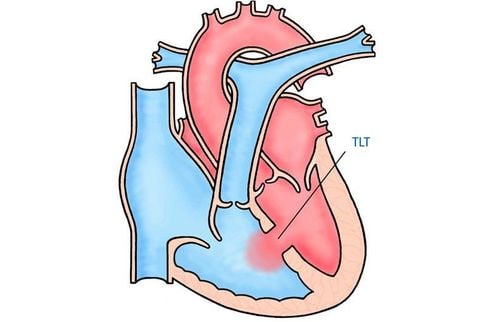This is an automatically translated article.
Article written by BSCK. Tran Hai Dang - Head of Diagnostic Imaging Department - Vinmec International General HospitalWill chest X-ray cause fetal malformations or affect the pregnancy process?
Regarding the effects of X-rays on health, the most important issue is the dose of radiation, the time of exposure, the number of times to receive rays in 1 year, 10 years... Each of us is a source of our own. radiation and every day we receive radiation from many natural sources around that no one can avoid.Diagnostic X-rays (types of X-ray) have a much lower dose than therapeutic X-rays (radiotherapy). Not every X-ray exposure is equally harmful.
With fully digitized X-ray machines (Digital Radiography) like those at Vinmec, the dose of rays is reduced by up to 50% compared to previous “traditional” X-ray machines.
Normally, a young, healthy woman with no personal or family history of illness related to childbirth, pregnancy, etc., has a risk of fetal malformations of 3-6% (most of them). are minor malformations) and the risk of miscarriage is about 15%. This is a rate common to all women from the start of pregnancy, unchanged even in developed countries.
When taking a chest X-ray, the X-ray beam does not reach the fetal region of the pelvis. Some secondary rays may be reached but the dose is very small and does not increase the risk of fetal malformations or miscarriage.

Hình ảnh máy chụp X-quang tại Bệnh viện Đa khoa Quốc tế Vinmec
Even at the threshold of 50 millisieverts (equal to 500 continuous chest X-rays) does not increase the risk to pregnancy. According to the literature published to date, the radiation dose that can increase the risk of fetal malformations or miscarriage is more than 200 millisieverts (equal to 2000 consecutive cardiopulmonary scans).
Risks with each stage of pregnancy
In the first 2 weeks, the fetus is very little affected by X-ray malformations. However, X-rays can cause abortion but must be at much higher doses than 50 millisieverts (500 cardiopulmonary scans)From the 2nd week to the 1st week 8, X-rays with a diagnostic dose do not cause malformations, abortions or retardation of the fetus, unless "ingestion" is greater than 200 millisieverts (2000 chest x-rays). From weeks 8 to 15, the fetal central nervous system may be sensitive to X-ray effects, but must be at doses above 300 millisieverts (3000 chest x-rays). fully developed. Fetal tolerance to X-rays is better, almost equal to that of the mother.
More information related to dental X-ray
When a pregnant woman takes a dental scan, the fetus receives a radiation dose of 0.01 millirad (0.001 millisievert), which means that it must be scanned 100,000 times in a row for the fetus to receive a dose of 1 rad. Thus, it takes 500,000 dental crowns to reach the threshold of 50 millisieverts, which still does not increase the risk of pregnancy at all.More information regarding X-rays in Bone Mineralization
When measuring bone mineral by X-ray, the patient has a radiation dose of 0.001 millisivert, equivalent to 3 hours of natural radiation that each individual receives daily.Thus, there is no basis to worry that a single chest X-ray, or even a single abdominal CT scan (equal to 100-200 lung scans) could increase the risk of anomalies. fetal defects or miscarriage. After having a chest X-ray to find out that I was pregnant, there was no need to do anything. Until now, especially with the current new generations of machines, there is no published research document that recommends abortion because of the risk of fetal malformations after routine chest X-ray. Many people worry too much about this problem, the excessive and unfounded anxiety in early pregnancy affects the fetus more than the exposure to X-rays of the chest x-ray.
Pregnant women should focus their attention on food, drinking water, medicine, lifestyle or environmental pollution... are factors that can affect more than 3% of birth defects or 15% of birth defects. pregnancy in all young, healthy women who were pregnant and were completely exposed to X-rays during pregnancy. Not to mention those with a history of disease or family factors related to fertility, this rate is much higher.
However, to ensure maximum safety for the fetus as well as to avoid affecting the psychology of pregnant women and their families, you need to inform your doctor or radiologist in advance if you are pregnant. pregnant or likely to become pregnant to avoid unnecessary x-ray exposure.
If X-rays are not avoided according to professional requirements, pregnant women should be protected with lead vests to minimize X-ray exposure to the fetus.













